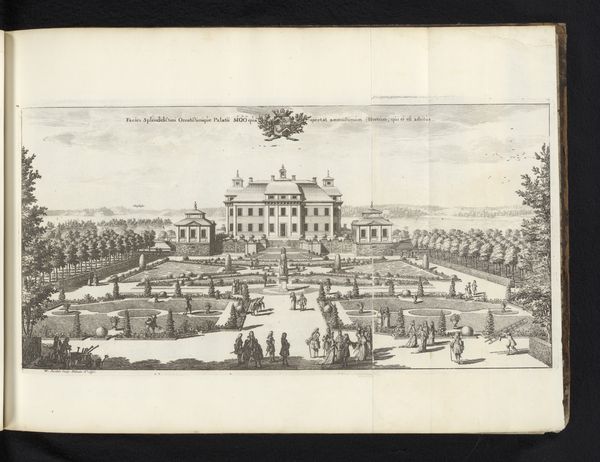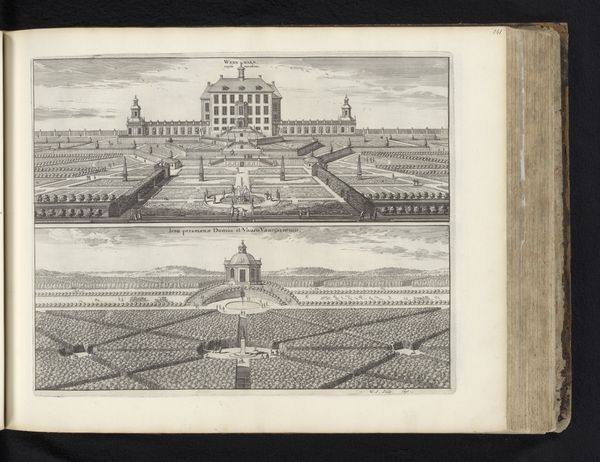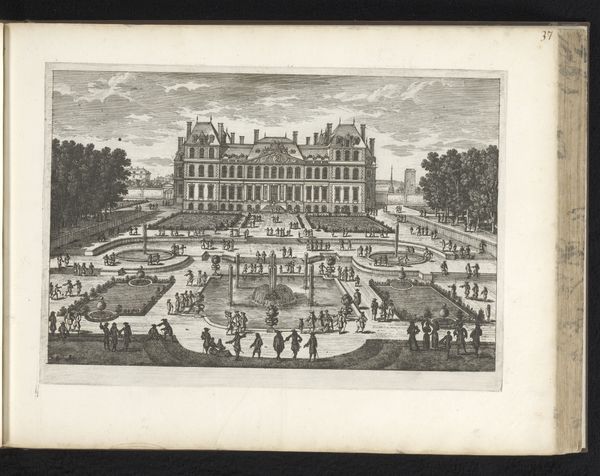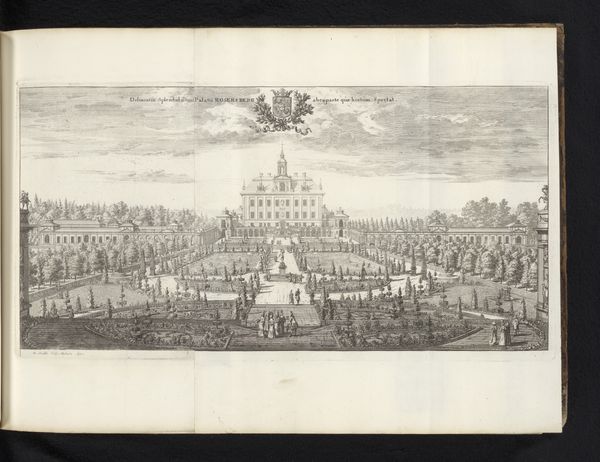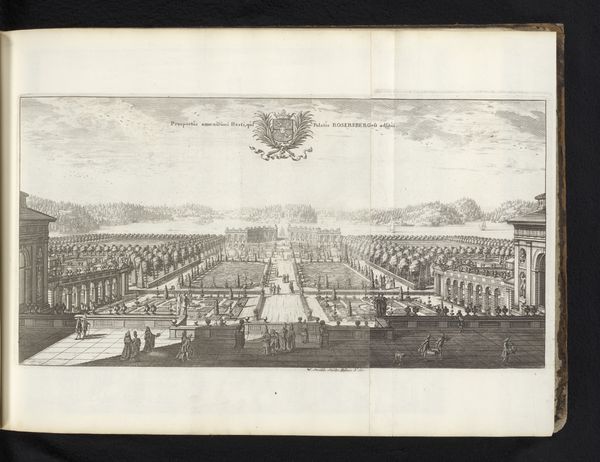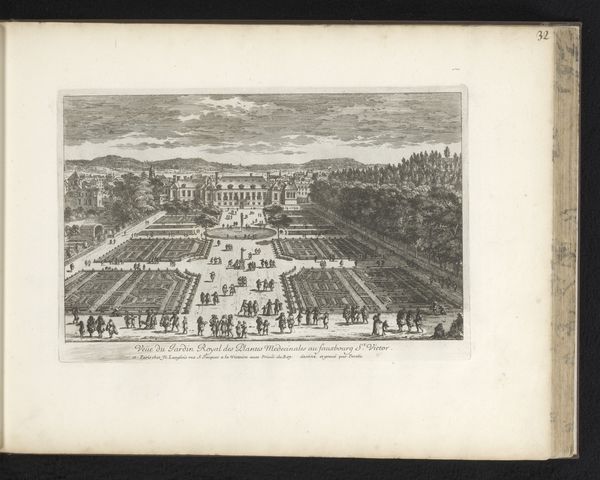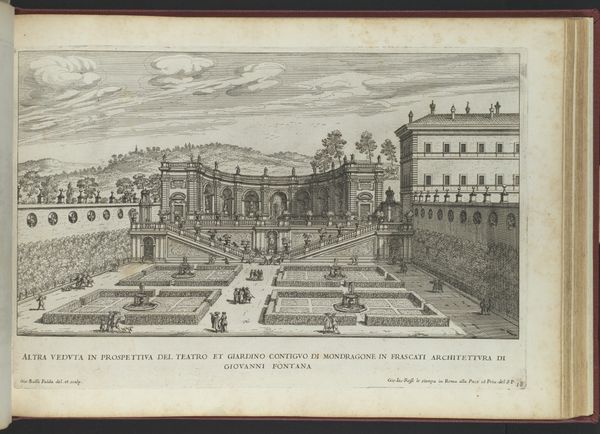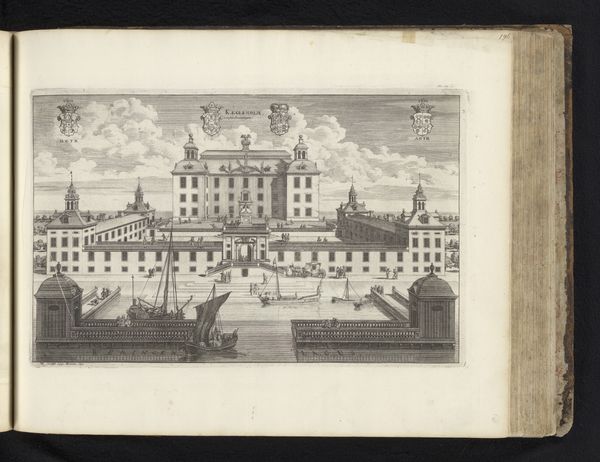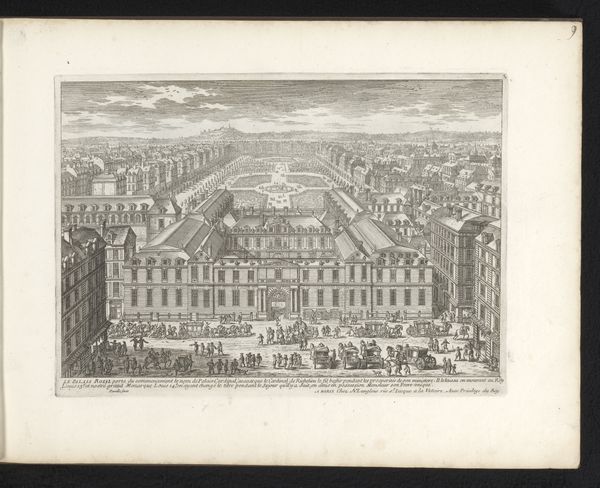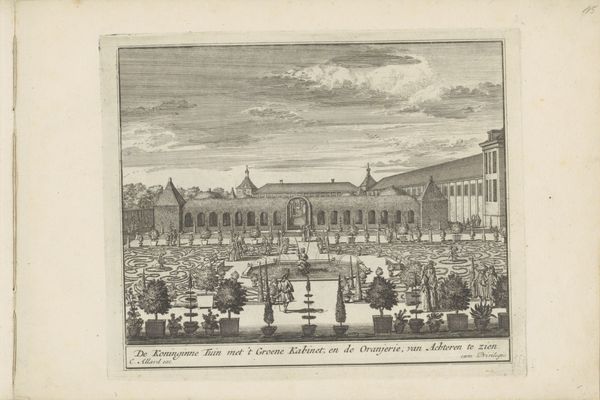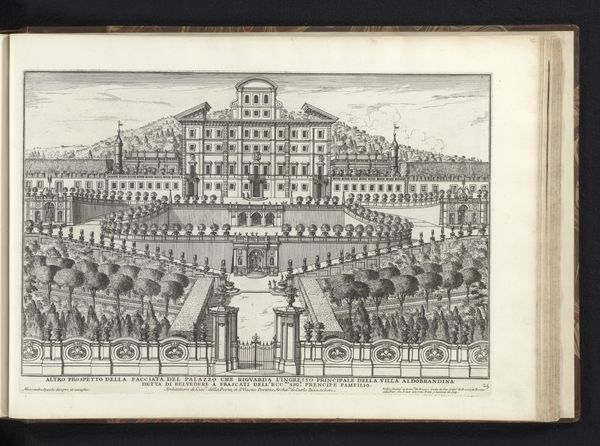
drawing, engraving, architecture
#
drawing
#
baroque
#
landscape
#
cityscape
#
engraving
#
architecture
Dimensions: height 215 mm, width 414 mm
Copyright: Rijks Museum: Open Domain
Editor: This engraving, "Slot Ekolsund en zijn tuinen" by Willem Swidde, dates back to 1690 and is currently housed in the Rijksmuseum. The detail is incredible! It's like stepping into a meticulously planned miniature world. What aspects of this piece strike you the most? Curator: Well, considering this engraving as a material object, made of paper and ink, reproduced through a deliberate labor process opens interesting avenues. How does the print medium itself—an accessible, reproducible technology— impact our understanding of Ekolsund's grandeur and its attendant aristocratic power? Editor: That's a fascinating point. I hadn’t considered the act of reproduction itself. Does the choice of engraving as a medium downplay or perhaps democratize the depicted wealth and status? Curator: Precisely! The material choice broadcasts status but the repetitive action involved with the production dilutes its "uniqueness," thus shifting the value. These baroque gardens represent an absolute transformation of the landscape into a display of cultivated power and leisure, so consider what the engraver has to say. Where does he focus his attention, and what can that teach us about his labor? Editor: I notice the sharp detail used for the architectural lines, almost reverent. Perhaps the artist sees this building as his means for providing his labor. I guess it reveals that Swidde recognizes his work depends on this display of power, but it is now available to anyone who could buy the print? Curator: An interesting perspective indeed. By producing it he ensures its proliferation while relying on that elite structure. Does that make the artist complicit or merely employed? These material considerations help contextualize the print within the broader socio-economic system of the late 17th century. Editor: That makes me consider art as a result of societal structures. Thank you; thinking about the print's creation rather than just the image has completely changed how I see it. Curator: Indeed. Reflecting on art production helps contextualize social issues inherent within artistic images.
Comments
No comments
Be the first to comment and join the conversation on the ultimate creative platform.
